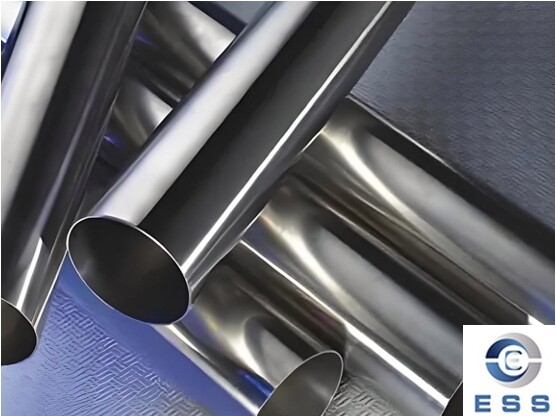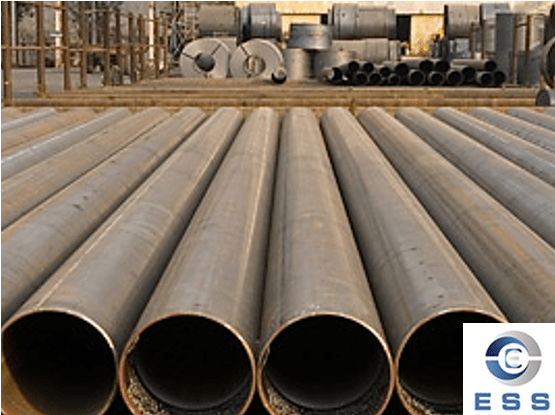
What Are The Classifications of Stainless Steel Precision Tubes?
Stainless
steel precision tube, as a stainless steel tube with quality standards beyond the ordinary, are unique in the field
of tubes with their extraordinary quality standards. Its high quality
requirements cover the accuracy of size, the roundness of the tube mouth and
excellent pressure resistance. Further, we can classify and understand
stainless steel precision tubes in more detail from multiple aspects such as
tube wall thickness, tube mouth size, tube cross-section shape, and material.
Wall
thickness
Stainless
steel precision tubes can be divided into thin-walled tubes and thick-walled
tubes according to tube wall thickness.
1.
Thin-walled stainless steel precision tubes
The
ratio of wall thickness to outer diameter of thin-walled tubes is less than 6%.
It has excellent heat dissipation performance and is often used as the heat exchanger tube. The inner tube wall needs to be kept smooth to reduce scaling. It
is suitable for central air conditioners, boilers, refrigerators and other
equipment.
2. Thick-walled
stainless steel precision tube
The
ratio of wall thickness to outer diameter of thick-walled stainless steel tube
is greater than or equal to 6%. Its weld must be fully penetrated, showing
excellent pressure resistance, mechanical properties and abrasion resistance.
It is often used in the manufacture of parts for textile equipment,
electroplating equipment, and dyeing equipment.
Tube
size
Precision
tubes can also be further classified according to the size of the tube,
including small-diameter and large-diameter precision tubes.
1.
Small-diameter stainless steel precision tube
The
diameter range of small-diameter stainless steel precision tubes is usually
between 0.7 and 8 mm. This type of tube not only has good corrosion resistance
and tensile resistance, but also meets stringent standards in the control of
tube error. For this reason, it is widely used in the manufacture of optical
circuits, thermal instruments and automation instruments.
2.
Large-diameter stainless steel precision tube
Large-diameter
tubes play a key role in the manufacture of industrial pipelines, nuclear
energy, electricity and sewage treatment equipment due to their excellent fluid
transportation capabilities. In addition, large-diameter pipes need to undergo
bright solution treatment and pickling passivation processes to further improve
their corrosion resistance.
Cross-sectional
shape of pipes
The
cross-sectional shapes of pipes vary, and the most common ones are round pipes,
square pipes and special-shaped pipes.
1.
Round and square tubes
Due to
their unique characteristics, round and square tubes are widely used in many fields, such as water outlet pipes of
drinking fountains, filter cartridges of water purification equipment, and
parts of lighting.
2.
Special-shaped tubes
Special-shaped
stainless steel precision tubes, such as fan-shaped tubes, triangular tubes,
elliptical tubes and grooved tubes, may not be familiar to many people.
Nevertheless, they play an indispensable role in the fields of bathrooms,
machinery, etc., such as pipe fittings for bathroom shower racks, pipes for faucets, heat exchange pipes
for gas water heaters, and structural tubes for mechanical equipment. It is
worth noting that special-shaped tubes have extremely high requirements for the
precision of the tube mouths, and any deviation may affect their later
processing and installation.
Material
The
material of the pipe also affects its application range. The more common ones
are 304 and 316 stainless steel.
1. 304
stainless steel
304
stainless steel precision tube has good corrosion resistance and plasticity,
and is suitable for a variety of conventional applications, such as food
processing, indoor equipment, etc.
2. 316
stainless steel
316
stainless steel precision tube has better corrosion resistance and chloride
erosion resistance, and is usually used in chemical, marine equipment and
medical equipment and other fields with high material requirements.
Summary
Stainless
steel precision tube has become an important material in modern industrial and
civil equipment manufacturing with precise size control, excellent pressure
resistance and a variety of material choices. Whether in air conditioning heat
exchange, industrial transportation or precision instruments, the reasonable
selection and application of stainless steel precision tube can significantly
improve the performance and service life of the equipment.
Read more: What Is The Hardness of Stainless Steel Precision Tube? or What Is A Stainless Steel Precision Tube?













 Eastern Steel Manufacturing Co.,Ltd not only improve product production and sales services, but also provide additional value-added services. As long as you need, we can complete your specific needs together.
Eastern Steel Manufacturing Co.,Ltd not only improve product production and sales services, but also provide additional value-added services. As long as you need, we can complete your specific needs together.










